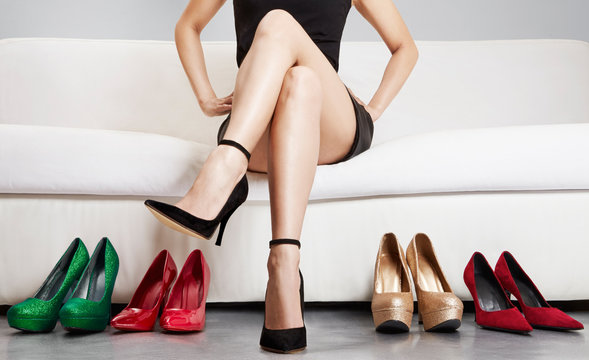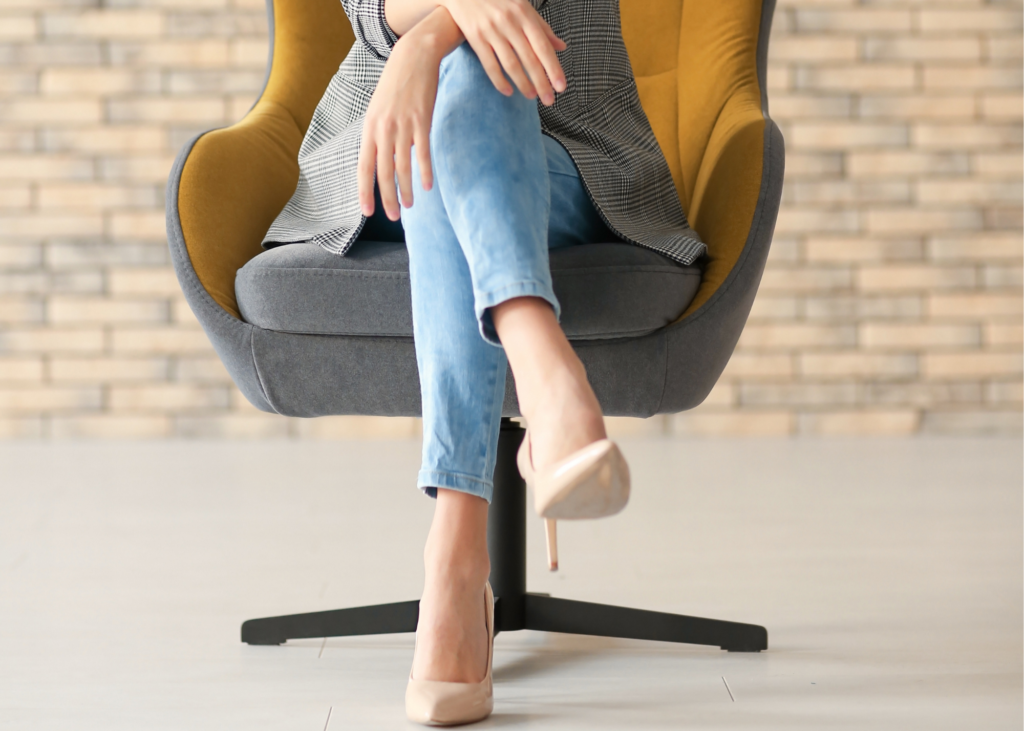The way people sit can reveal a lot about their comfort, cultural background, and even psychological state. One particular posture—the act of crossing one’s legs while sitting—is especially common and often observed among women in both casual and formal settings. While it may seem like a simple, habitual movement, this gesture has sparked interest among psychologists, sociologists, and cultural analysts alike.
Understanding why women often cross their legs requires a deeper look into the intersection of social conditioning, cultural expectations, body language, and individual comfort. This article explores the various factors that may influence this common sitting posture and offers a balanced and respectful analysis grounded in both psychological and social science.
Historical and Cultural Influences

Across many cultures, the posture of sitting has carried specific meanings—sometimes subtle, sometimes overt. In earlier centuries, particularly in Western societies, women’s postures were often expected to conform to ideals of grace and composure. These expectations were reflected in literature, art, and etiquette manuals, which portrayed women as poised and reserved, often seated with crossed legs as a mark of refinement.
However, these norms were not universally shared. In many Eastern cultures, for instance, sitting with legs crossed—especially in the presence of elders or during formal settings—was discouraged, and such behavior could be interpreted differently, depending on the cultural context. In such environments, sitting cross-legged might even be considered informal or inappropriate, particularly in traditional or ceremonial settings.
These cultural differences highlight how nonverbal communication, such as sitting posture, is not inherently meaningful on its own but rather interpreted through the lens of local values and customs.
Social Conditioning and Posture
From a young age, individuals are often taught how to behave in public spaces, and these lessons frequently include body language. For

women in particular, certain sitting postures may be encouraged over others. Crossing one’s legs might be promoted as a way to sit “properly” or “ladylike,” reinforcing a subtle social expectation about femininity and public appearance.
Fashion also plays a role. Many styles of clothing designed for women—such as skirts or dresses—may naturally encourage sitting postures that feel more secure or comfortable, including leg crossing. As a result, what might appear as a natural or unconscious habit could be influenced by external factors, including wardrobe choices and social expectations.
Moreover, the influence of media and popular culture often perpetuates visual norms about how women should present themselves. Magazine covers, television shows, and advertisements frequently portray women in seated poses with crossed legs, subtly reinforcing this image as part of a broader standard of elegance or poise.
Psychological Insights

From a psychological standpoint, body language—including leg positioning—can offer clues about a person’s inner state. While it’s important to avoid overgeneralizing, research in nonverbal communication suggests that crossing one’s legs may serve a variety of psychological functions.
For some, it may indicate a desire for comfort or self-protection in social settings. Crossing the legs can create a smaller physical footprint, which might feel less vulnerable in crowded or unfamiliar environments. It can also signal a form of psychological boundary, offering a sense of security or personal space.
Conversely, in some contexts, crossing one’s legs can indicate relaxation and ease. For example, when in a familiar or safe environment, this posture might reflect a sense of calm and contentment. The meaning of the gesture depends greatly on other accompanying cues, such as facial expressions, hand movements, and overall posture.
Behavioral psychologists also highlight that body language is often subconscious. A person may not even be aware they are crossing their legs or what message it might convey to others. That said, the position of the legs—whether crossed toward or away from someone—can subtly influence how others perceive engagement, confidence, or attentiveness in conversation.
Gender, Power, and Workplace Dynamics

In professional environments, nonverbal communication—including posture—can shape perceptions of competence and confidence. Some studies suggest that open body language is more likely to be associated with leadership and assertiveness. This has led to discussions around “power posing,” where expansive postures are said to influence both how a person feels and how others perceive them.
Because societal norms have historically placed greater emphasis on women’s appearance and demeanor, the way a woman sits may still be subject to more scrutiny than her male counterparts. However, awareness of these biases is growing, and contemporary conversations around gender and workplace equity increasingly acknowledge the importance of allowing individuals to express themselves without judgment or pressure to conform to outdated norms.
The Role of Personal Comfort

Beyond cultural and psychological factors, the most straightforward reason someone might cross their legs is comfort. Everyone has a unique body type and physical preferences, and for many people—regardless of gender—crossing the legs simply feels natural.
It’s also a dynamic posture, allowing for subtle shifts in weight and position while sitting for extended periods. Whether on a sofa, at a desk, or during a meeting, adjusting one’s posture helps reduce fatigue and muscle strain.
Recognizing this helps us move away from interpreting leg crossing as inherently symbolic or gendered. Instead, it becomes one of many valid and natural ways to sit, chosen based on comfort, habit, and context.
Moving Toward Inclusivity and Awareness
As social norms evolve, so too does the language we use to interpret body behavior. Rather than viewing leg crossing as a definitive indicator of personality or gender role, a more inclusive perspective allows room for individual variation and choice.
Body language can be a powerful tool for understanding human behavior, but it must be considered within broader cultural, environmental, and individual contexts. Encouraging body autonomy and recognizing diverse expressions of comfort and identity are essential steps toward a more inclusive and equitable society.
Final Thoughts
The act of crossing one’s legs while sitting is more than just a physical gesture. It is shaped by a combination of culture, psychology, social norms, and personal preference. While historically associated with gendered expectations, today this posture can be seen through a more nuanced lens—one that values individual choice over prescribed standards.
Whether interpreted as a gesture of comfort, style, confidence, or personal space, leg crossing reflects the complexity of human behavior and communication. By remaining aware of these dynamics, we can foster a more respectful and empathetic understanding of the subtle ways people express themselves in everyday life.
